Opinion
Red Deer holds the dubious title of having the poorest ambient air quality. The province has some ideas on that.

Our air quality in Red Deer has been very poor for years and I always felt that every level of government left it for the other levels of government to find a cure.
Our provincial government has taken steps since forming government in 2015. Some were expensive yet effective like reducing our dependency on coal. Some steps were eye ball rolling steps like doing more studies.
Our municipal government is taking steps and are talking about taking more steps. Let us hope that it finds the planning department and we can make the appropriate changes that I believe is necessary. For starters do we need all 5 high schools built and planned for, along 30 avenue and no high schools north of the river where 30% of the population resides? Would it mean a lot less commuting for 30% of the students if did not have to commute across the city to go to school and participate in extra-curricular activities? Just asking.
Studies are influenced by interpreters and interpretations, adding to or subtracting from parameters and by time lines. Different elements like SO2 or NOX if added or removed from comparables will affect the interpretations. In any interpretation we still have poor air. Possibly the worst air in Canada on average. Of course downtown Calgary, Toronto, or Edmonton may peak during rush hour traffic but overall we hold the title of worst ambient air quality.
So to recap. Let us go back to a story on CBC News.
Alberta is hoping to relieve Red Deer of a less than prestigious title. The central Alberta city, for years, has had the worst ambient air quality in the province. (CBC NEWS September 2015)
A report in September confirmed what many in the region already believed.
Industrial activity and vehicle emissions had pushed Red Deer’s ozone and fine particulate matter levels above national standards going back to 2009.
The province’s action plan, heavily based on its previously-announced plan to eliminate coal pollution by 2030, was introduced Thursday.
In a statement, Noah Farber of the Asthma Society of Canada said a reduction in coal pollution is a step in the right direction.
“The Alberta government’s commitment to the elimination of coal fired electricity generation is a positive step to improving air quality for all Albertans. This is particularly true for those with asthma and other respiratory diseases, who will now be able to breathe well and live healthy active lives,” Farber said.
The province is giving the Parkland Airshed Management Zone a grant of $250,000 to identify and monitor sources of pollution.
Another $560,000 will help a new air monitoring station in Red Deer provide more detailed identification of pollution sources for the region.
The Alberta Motor Association will continue driver education with an aim of reducing practices like idling, that increase emissions.
Red Deer outlined a series of actions the city was taking to address the issue following the September report, including buying 30 per cent of its energy from green sources and expanded public transit options, among others.
(CBC NEWS)
Alberta Environment Minister Shannon Phillips says the province is on track to have the worst air quality in Canada, and vows the government will put measures in place to reduce emissions from industry and vehicles.
“The time to act is long overdue,” Phillips said.
“We have a responsibility to do everything we can to protect the health of Albertans.”
Phillips made the remarks after seeing the results of the Canadian Ambient Air Quality Standards report, which show the Red Deer region has exceeded national standards. Four other regions — Lower Athabasca, Upper Athabasca, North Saskatchewan and South Saskatchewan — are close to exceeding national standards.
Phillips said there is no immediate health risk for people living in central Alberta.
“These results are concerning,” Phillips said in a news release. “We can’t keep going down the same path and expecting a different result. Our government has a responsibility to protect the health of Albertans by ensuring air pollution from all sources is addressed.”
The province will initiate an “action plan” to deal with poor air quality in the Red Deer area, a move she said is required under the Canadian Ambient Air Quality Standards.
The government said a scientific study looking into the cause of the air pollutants is currently underway, and people living in the Red Deer area, industry stakeholders and the provincial energy regulator will be consulted. That plan is expected to be complete by the end of September and will take Red Deer’s geography and air patterns into consideration.
As part of the plan, Phillips said the government will:
Review technology that could be used to reduce emissions.
Review whether polluters in Alberta are meeting national standards.
Look at other ways to reduce emissions, for example, ways to curb vehicle emissions.
The Pembina Institute, non-profit think tank focused on clean energy, was quick to follow up with its own statement about the air quality results, saying the report shows the need for a provincewide pollution reduction strategy.
“This new report adds to the mounting evidence that Alberta needs to reduce air pollution across the province. Measures that will produce more rapid results are also needed in the numerous regional hot spots identified by the report,” said Chris Severson-Baker, Alberta’s regional director at the Pembina Institute.
“The report shows that, unless emissions are cut, most of the province risks exceeding the Canadian Ambient Air Quality Standards for fine particulate matter. This places an unacceptable burden on people’s health and on the environment,” he said.
The Canadian Association of Physicians for the Environment has also weighed in on the report, saying it is “dismayed, but not surprised” by the findings.
“This calls into question the pervasive belief that the clear blue skies of Alberta foster clean air, safe from the pollutants better known from smoggier climes,” said Dr. Joe Vipond, an emergency room doctor and member of the association.
Phillips blamed the previous Tory government for contributing to the rising pollution levels, saying the PCs resisted meaningful action on climate change.
Canadian Ambient Air Quality Standards are national standards for particulate matter and ozone exposure.
I received this e-mail this past week from the Director of Air Policy for the Government of Alberta. The Premier did not toss my concerns into the wastebasket but forwarded it to someone who can actually answer some questions. Spoiler alert, there will be some eye-ball rolling.
My name is Hamid Namsechi and I am the director of Air Policy for the Government of Alberta. Premier Notley forwarded a copy of your letter regarding your concerns about air quality and the need for action to reduce air pollution in Red Deer.
The Government of Alberta takes the health of Albertans very seriously. There are many agencies both inside and outside government that look after protecting the quality of our environment. For example, while the Departments of Health and Environment and Parks are responsible for human and environmental health policies and outcomes, agencies such as Alberta Energy Regulator, Clean Air Strategic Alliance, Alberta’s ten airshed organizations, Alberta municipalities, etc. all work collaboratively to ensure the quality of air in Alberta meets all provincial and national standards.
As for action on emissions, you will be happy to know that significant progress has been made since the 2011-2013 Red Deer air quality assessment report was released in September 2015. For starters, part of taking action on reducing fine particulate matter in Red Deer is improving the state of knowledge. Until 2014, Red Deer Riverside was the only monitoring station in the Red Deer area. The Red Deer Lancaster monitoring station was added as a second air quality monitoring station in late 2014. This station will help us to understand if fine particulate matter concentrations vary in different parts of the City of Red Deer.
In April 2016, the Government announced funding for two significant studies to take place in Red Deer. One study involved air quality modelling to determine the relative impact of various sectors on the air quality in Central Alberta. The other is a long-term monitoring study which has commenced sampling and will continue to sample fine particulate matter at three locations in and around the City of Red Deer. These studies will provide valuable information regarding likely sources of emissions that are contributing to the issue of high fine particulate matter concentrations in the City of Red Deer.
Direct action has been taken to reduce emissions from the coal-fired electricity generation at the Battle River site – the biggest source of air pollution in the Red Deer region. As you are aware, coal plants produce a number of air pollutants when they burn coal to make steam to generate electricity. During combustion in air, the sulphur dioxide (SO2), various nitrogen oxides (NOx), mercury (Hg), primary particulate matter (PM) and a number of other emissions such as heavy metals are produced as by-products. The operating permit of the Battle River units has now been revised and recent records show that emissions are down by over eighty percent from pre-2015 levels.
Similarly, all industrial approvals for other facilities in the Red Deer region are currently being systematically looked at for opportunities to reduce emissions. After Minister Phillips news conference in 2015, industrial approvals staff in both Alberta Environment and Parks as well as the Alberta Energy Regulator have stepped up the stringency of the emissions standards for facilities operating in stressed airsheds.
As for reducing the volume of non-industrial emissions, there has also been a lot of progress since 2015. Alberta Government has been working with the Clean Air Strategic Alliance, federal Government, Alberta municipalities, agricultural sector, industry and environmental non-governmental organizations to develop strategies to reduce the cumulative impacts of emissions from the many small sources (such as transportation).
The good news in all of these from the ambient air quality perspective is that Red Deer’s latest fine particulate matter readings have substantially improved since the Minister’s news conference. Our preliminary assessment of the 2016 annual average for PM2.5 at Riverside Station shows a forty six percent reduction compared to the historical high levels, which puts the current air quality in Red Deer in the yellow range.
Thank you for taking the time to share your concerns with the Government of Alberta.
Sincerely,
Hamid Namsechi, P.Eng.
Air Policy Director
Policy & Planning Division
Environment and Parks
So we have seen some improvements, will it be enough? Is it just another interpretation?
Crime
RCMP Bust Industrial-Scale Superlab Outside Toronto
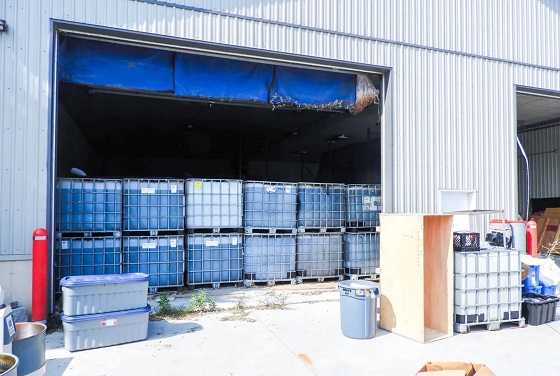
A months-long RCMP investigation has led to the takedown of a massive synthetic-drug operation resembling the “super labs” often found in British Columbia — but this one was discovered just forty-five minutes north of Toronto. Officers uncovered an industrial-scale facility capable of producing millions of dollars’ worth of fentanyl, methamphetamine, MDMA, and GHB.
The RCMP’s Ontario Federal Policing unit announced Friday that search warrants executed on September 7 in Schomberg, northwest of Toronto, resulted in the seizure of nearly $10 million in suspected controlled substances, along with prohibited weapons, chemical precursors, and a range of illegal production equipment.
In addition to cash, drugs, and chemicals, officers discovered a pill press, firearms, handwritten drug “recipes,” flasks, chemical glassware, and other lab components. Approximately 20,000 litres of hazardous waste were also removed from the site.
Investigators say the probe began in spring 2025, when officers detected a suspicious bulk-chemical order placed by Christopher O’Quinn, operating under the business name O’Quinn Industries. “The chemicals ordered are known to police to be used in the production of fentanyl, MDMA, methamphetamine, and for cannabis extraction,” the RCMP said.
After weeks of surveillance, RCMP officers uncovered what they describe as a large-scale clandestine lab hidden on a Schomberg property. Dismantling the facility required coordination with the Ontario Fire Marshal, Health Canada, and municipal emergency services — a hazardous-materials operation that lasted ten days.
Three suspects — O’Quinn, Liang Xiong Guo, and Katie King — were arrested and face a combined 33 criminal charges.
O’Quinn faces 20 offences, including production and trafficking of Schedule I substances, possession of precursor chemicals, and multiple weapons violations involving a bullpup-style shotgun and a .22-calibre rifle.
Guo faces nine counts linked to the production and trafficking of methamphetamine and MDMA.
King faces four counts related to meth trafficking and illegal firearm possession.
RCMP officials said additional substances are undergoing Health Canada testing to determine whether synthetic opioids such as fentanyl were present.
Authorities also seized $8,000 in cash, multiple firearms, laboratory glassware, and chemicals capable of producing further drug batches valued in the millions.
“The complexity and danger of the operation required extensive inter-agency collaboration,” the RCMP said, thanking partners including the Ontario Provincial Police, Niagara Regional Police, York Regional Police, South Simcoe Police, the Ontario Fire Marshal, Health Canada, the Ministry of the Environment, and the Canada Border Services Agency.
Health Canada testing and court proceedings are ongoing.
Opinion
A Nation of Announcements: Canada’s Government of Empty Promises
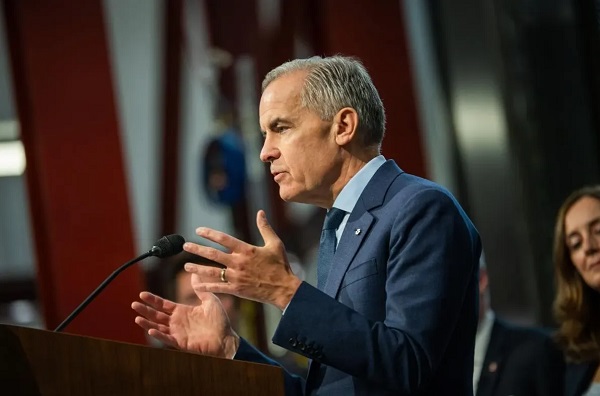
Mark Carney vowed to strengthen Canada’s economy. Instead, he’s perfected the art of saying everything and doing nothing
Carney was at another presser this week, this time preaching to university students about “strengthening Canada’s economy” and warning that “challenges and sacrifices” are coming. Sacrifices? From who exactly? Because if you’re under 40 in this country, you’ve already sacrificed everything. You can’t buy a house, can’t save a dollar, can’t find stable work because half the job market’s been outsourced to temporary foreign workers. But sure, the problem is that you haven’t sacrificed enough.
This is the same tired sermon from the couch government, the one that never gets up, never follows through, never builds anything. They announce. They emote. They lecture. And then they go right back to the couch to film another round of “we’re taking bold action” clips for social media.
Carney stood there and talked about “shared responsibility” as if Canadians haven’t been carrying this government’s failures on their backs for a decade. The housing crisis didn’t appear out of thin air. It’s the direct result of political paralysis, endless announcements, no construction. The job market isn’t collapsing because of fate; it’s collapsing because they replaced permanent employment with government-approved temp work and called it “labour flexibility.”
And now they’re adding insult to injury with a trillion-dollar deficit, spending money they don’t have while telling Canadians to brace for “sacrifice.” It’s almost performance art: the man responsible for Canada’s fiscal implosion lecturing broke students about tightening their belts.
This government lives for the podium moment, the slow walk up, the soft lighting, the “historic” headline. But when the lights go off, nothing happens. No cranes, no hires, no policy. Just empty rhetoric echoing across a country that can’t afford to believe it anymore.
They call it leadership. It’s not. I call it couch potato politics, a government that loves to announce but refuses to move, content to watch the country sink from the comfort of its own self-importance.
Building Bureaucracy Instead of Buildings
Take housing. They promised half a million homes this year. Half a million. Sounds bold, sounds heroic. It’s also mathematically impossible—and everyone in the business knows it.
Here are the facts. The government’s official housing plan claims it will “double the pace of construction to almost 500,000 new homes a year.” That would be wonderful if it weren’t pure fiction. Canada has never come close to that number. The highest housing completion level in our history was around 260,000 units, and that was back in 1974. Even now, we average between 250,000 and 300,000 housing starts a year. Not completions—starts. That means the government is promising to more than double our output, with no new workforce, no new supply of materials, and no regulatory reform to make it possible.
You can’t conjure skilled tradesmen, drywall, and concrete out of thin air. The country is already short on plumbers, electricians, and framers. TD Economics called the goal “an extremely daunting task” because of these same labour and material bottlenecks. Municipal zoning rules remain slow and restrictive. Lumber prices fluctuate wildly. Every construction company in Canada will tell you: it’s hard enough just keeping up with demand now, let alone doubling it.
So what did Ottawa do? They launched Build Canada Homes, a brand-new federal agency. Sounds impressive—until you realize it doesn’t build anything. It’s another layer of bureaucracy designed to issue reports, press releases, and feel-good targets. The government says this new entity will “put Canada back in the business of building homes.” Translation: another round of announcements about how “building will one day be easier.”
The reality: instead of cranes, we got committees. Instead of nails and lumber, we got hashtags and slogans.
If you’re keeping score, this is the same pattern we’ve seen across the board. Big press conferences. Lofty goals. No follow-through. Housing is the perfect example. It’s like that friend who swears this is the year he’s finally getting in shape. He buys the gym membership, posts the motivational quote, and then sits back down on the couch with a bag of chips. That’s Ottawa today—bragging about progress it hasn’t made, measuring success in microphones, not foundations.
You want to fix the housing crisis? Get the government out of its own way. Cut red tape, open land for development, speed up permits, and let builders build. But that’s hard work. Much easier to just call another press conference and promise the moon.
Announce, Repeat, Forget: Ottawa’s Border Policy in a Nutshell
They’ve announced “1,000 new border agents” so many times, you start to wonder if these people even realize we can Google things. First, it was the campaign promise, all swagger, no schedule. Then, a few months later, same line, different backdrop, more flags. Last month in Niagara Falls? Boom, “1,000 new CBSA officers!” again. This is the Liberal version of Groundhog Day: every six weeks, they see their shadow and re-announce the same press release.
The “Fentanyl Czar” announcement? Same script, same actors. They even dusted off the same number. “We’re hiring 1,000 new border officers.” Fantastic. Except… we were told that already. Twice. And still, there’s no hiring blitz, no graduation ceremonies, no deployments. Just slogans. The thousand officers exist only in PowerPoint slides and talking points — a ghost army armed with bullet-points instead of badges.
And then there’s the $617 million “costing.” That’s supposed to make it sound serious, except it’s spread over five years and doesn’t guarantee a single new officer will be patrolling the border before the next election. Imagine bragging about building an army, then admitting you haven’t bought the boots yet.
Meanwhile, fentanyl is killing record numbers of Canadians, auto-theft rings are shipping stolen SUVs through our ports like Amazon Prime, and border seizures are flat. The real smugglers must love this government, every few months Ottawa holds another press conference instead of another patrol.
This is what they do: they announce law enforcement, they don’t actually do law enforcement. They act like a press conference is a policy.
If words could stop fentanyl, the border would be sealed. If photo-ops could catch smugglers, we’d be the safest country on Earth. But you can’t police with promises, and you can’t protect a nation by recycling last year’s press release.
Trade: The Best Dumpster Fire in the G7
Mark Craney and the Liberals literally campaigned on being the guy who could handle Trump. That was his entire pitch, the calm, worldly banker who would stare down the big, bad American and come home with a deal. Remember that? “Steady hands on the economy,” “global respect,” “serious leadership.” And now? His big achievement is bragging that Canada has “the best dumpster fire in the G7.” That’s his defense. “Sure, everything’s burning, but look — our fire is slightly smaller than Germany’s!”
This is the man who said he’d stand up to Washington, negotiate from strength, restore respect. Instead, the U.S. slapped on fresh lumber duties, kept auto tariffs hanging over our heads, and poached our manufacturing jobs. Stellantis took billions in Canadian subsidies and then packed up to Illinois, and Carney’s response was to shrug and write another cheque.
It’s stunning. The guy who promised economic mastery can’t even keep factories in his own country. The “deal-maker” hasn’t signed a single new trade pact with the United States. The so-called fiscal genius has driven the deficit to a trillion dollars. And when challenged, he hides behind meaningless comparisons, “Well, we’re doing better than Italy.” Great. That’s like saying your house is half on fire, but at least the neighbors’ burned down completely.
This isn’t leadership; it’s self-congratulation in a crisis. Every sector is bleeding, autos, lumber, steel, and the man who swore he’d protect Canadian workers is giving lectures about “sacrifice” and “patience.” Canadians didn’t vote for a therapist; they voted for a leader. What they got instead is a spokesman for managed decline, a government that celebrates losing more slowly than everyone else.
Final thoughts
At some point, the slogans stop working. The podium lights dim, the cameras pack up, and what’s left is a country that’s been talked to death. You can’t run a nation on hashtags and hope. You can’t lecture people about “sacrifice” when they’ve been priced out of their own lives. You can’t promise half a million homes, a thousand border agents, or a balanced budget when every promise evaporates the moment the applause fades.
Canada doesn’t need another press release; it needs results. Real homes built. Real jobs created. Real trade deals signed. Real borders defended. But that takes conviction, not choreography. It takes a government willing to get off the couch, roll up its sleeves, and work for the people it’s been talking at for far too long.
Until then, we’ll keep getting the same show every week, the same headlines, the same stage-managed sincerity, the same “bold new vision.” Meanwhile, Canadians will keep doing what their government won’t: getting up every morning, working hard, paying the bills, and wondering when the people running this country will finally do the same.
We need change, real, measurable, grown-up change. We need leaders who treat the country like a responsibility, not a stage. We need accountability that doesn’t vanish when the cameras turn off. And most of all, we need voters who care about results, not vibes — who stop rewarding the performance and start demanding the proof. Because until that happens, the couch government will keep sitting exactly where it’s most comfortable: doing nothing, announcing everything, and calling it progress.
-

 MAiD15 hours ago
MAiD15 hours agoDisabled Canadians increasingly under pressure to opt for euthanasia during routine doctor visits
-

 Alberta17 hours ago
Alberta17 hours agoPetition threatens independent school funding in Alberta
-
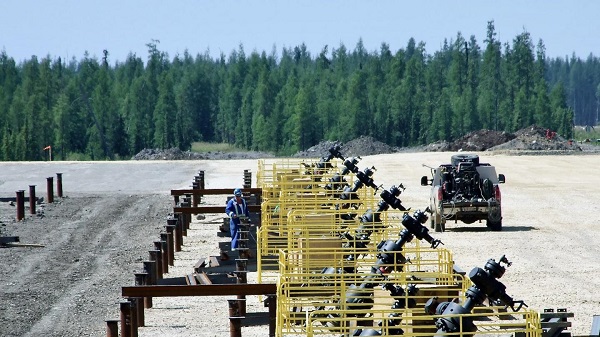
 Alberta2 days ago
Alberta2 days agoBusting five myths about the Alberta oil sands
-

 Courageous Discourse1 day ago
Courageous Discourse1 day agoNo Exit Wound – EITHER there was a very public “miracle” OR Charlie Kirk’s murder is not as it appears
-
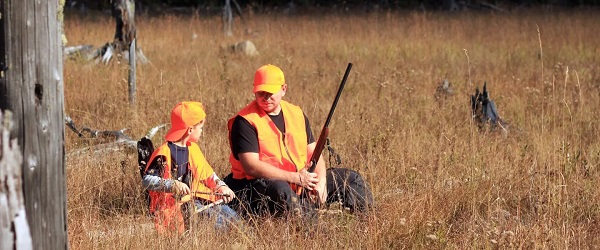
 Business2 days ago
Business2 days agoQuebecers want feds to focus on illegal gun smuggling not gun confiscation
-
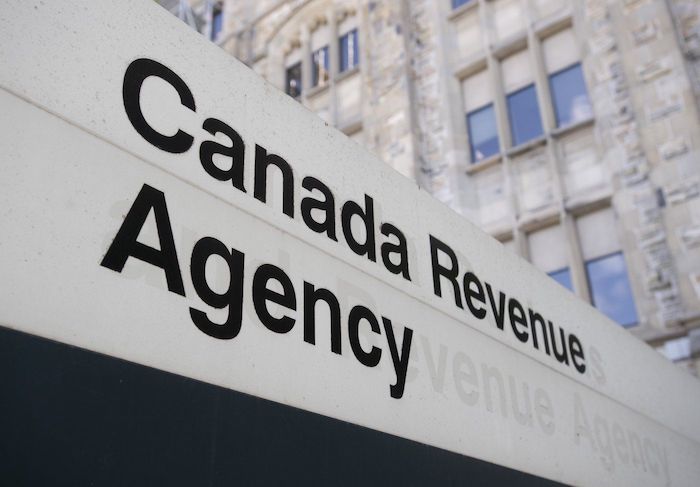
 Business16 hours ago
Business16 hours agoCanada Revenue Agency found a way to hit “Worse Than Rock Bottom”
-

 Energy2 days ago
Energy2 days agoMinus Forty and the Myth of Easy Energy
-
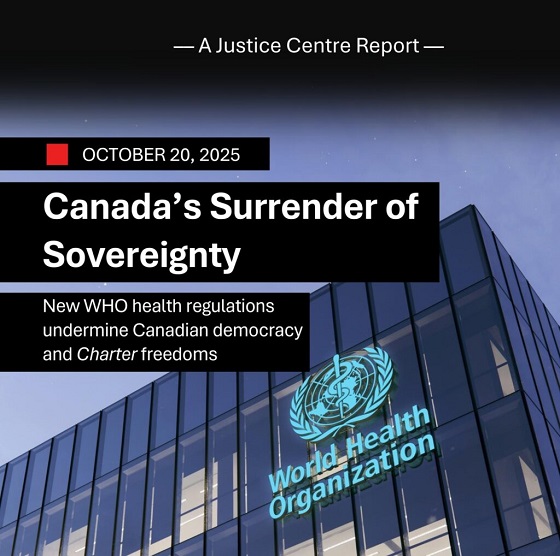
 Health2 days ago
Health2 days agoNew report warns WHO health rules erode Canada’s democracy and Charter rights








